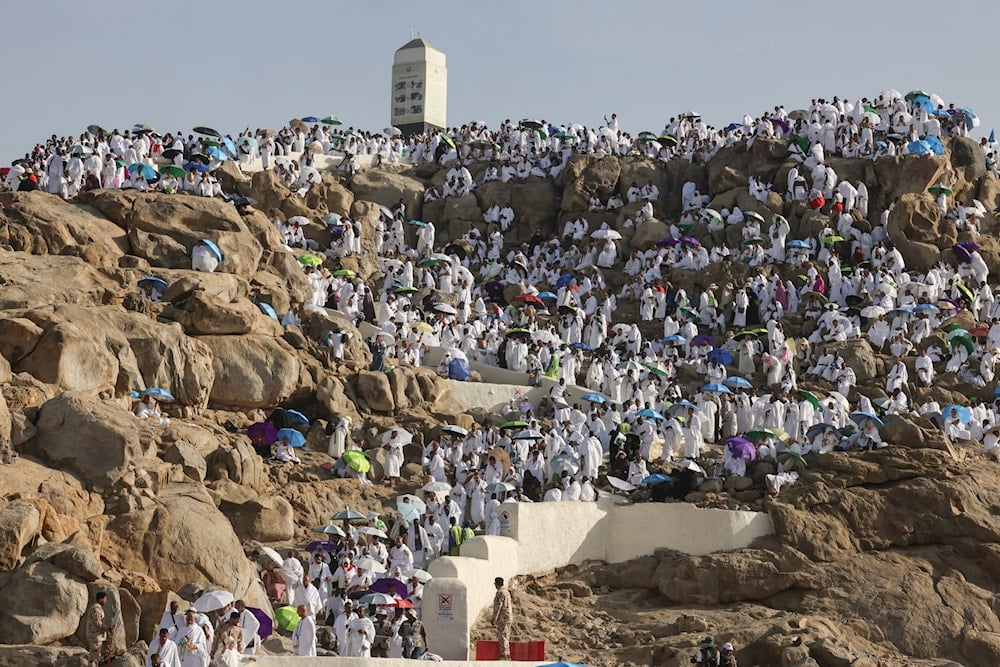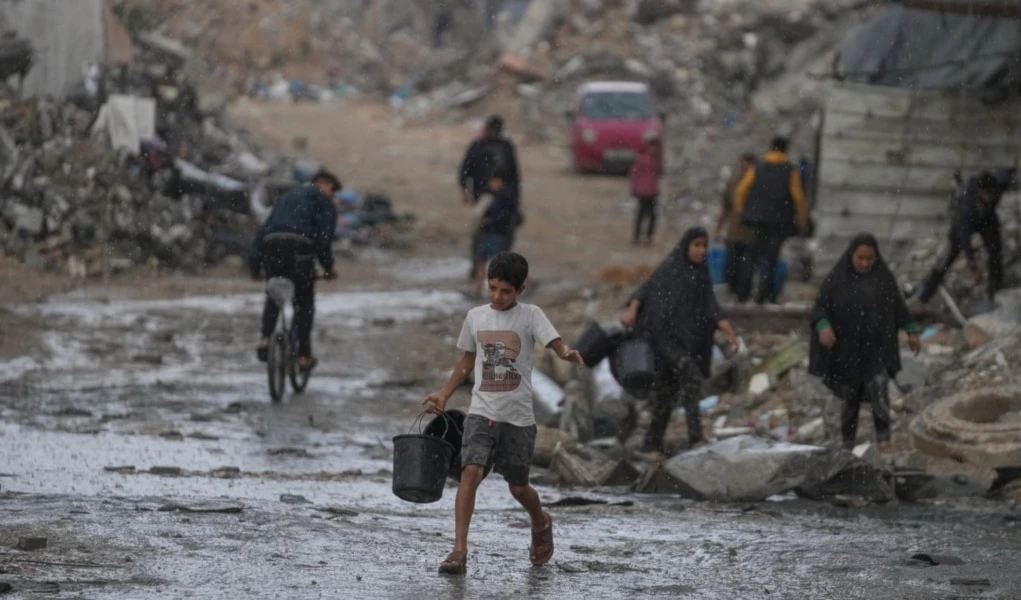Sayyed Khamenei urges Islamic unity on Gaza as pilgrims pray at Arafat
Iranian leader Sayyed Ali Khamenei calls on Muslim nations to unite against "Israel" and end Gaza’s suffering, as over a million pilgrims endure intense heat.
-

Muslim pilgrims pray at dawn on Saudi Arabia's Mount Arafat, also known as Jabal al-Rahma or Mount of Mercy, during the climax of the Hajj pilgrimage on June 5, 2025. (AFP)
The Leader of the Islamic Revolution and the Islamic Republic of Iran, Sayyed Ali Khamenei, has called on Muslim nations to draw inspiration from the spiritual and collective essence of Hajj to help end the suffering in Gaza.
In a message to pilgrims, Sayyed Khamenei emphasized that this year marks the second Hajj season overshadowed by the tragedy in Gaza and broader West Asia.
He condemned the “brutality of the Zionists,” which, he said, has escalated the catastrophe in Gaza to “an unimaginable level.”
Highlighting the killing of Palestinian children by hunger, thirst, bombs, bullets, and missiles, Sayyed Khamenei described the situation as a “profound humanitarian disaster,” questioning, “Who will rise to confront this human tragedy?”
The Iranian leader urged Islamic governments to block all support enabling the “criminal Zionist entity” to continue its aggression. He also called on the people of these nations to pressure their governments to take meaningful action.
While acknowledging existing political differences among Muslim countries, Sayyed Khamenei stressed that these must not be an obstacle to unified efforts in support of Gaza.
He further accused the United States of being a central accomplice in "Israel’s" crimes and urged US-aligned governments in the Islamic world to respond to the Quranic call to defend the oppressed and to force the “arrogant US government” to cease its “savage behavior”.
Massive turnout for Hajj despite harsh conditions
Meanwhile, Hajj 2025 commenced with nearly 1.5 million Muslims converging on Mecca, undeterred by severe heat and strict regulations. On Thursday, pilgrims continued to Mount Arafat to perform the most essential rite of Hajj under sweltering temperatures reaching 42°C (107.6°F).
Hundreds of thousands gathered at Arafat from the early morning, engaging in prayer and Quran recitation until sunset before moving to Muzdalifah to prepare for Eid al-Adha.
Saudi authorities issued repeated warnings about heat exhaustion, advising pilgrims to remain under shade between 10 am and 4 pm and avoid climbing hills due to the risk of heatstroke.
Saudi preparations after past fatalities
In response to last year’s deadly heatwave, which claimed over 1,300 lives, Saudi authorities significantly ramped up safety measures.
According to Minister of Hajj Tawfiq al-Rabiah, over 250,000 personnel from more than 40 government agencies were deployed. Enhancements included expanding shaded areas by 50,000 square meters and installing over 400 cooling units. Thousands of medical teams are stationed across holy sites.
Crackdown on unauthorized pilgrims
Strict enforcement has also targeted unauthorized pilgrims. Officials reported that many deaths during last year’s Hajj involved individuals lacking permits, who were left without proper shelter or transport.
This year, measures include ground patrols, drone surveillance, and digital alerts to deter illegal entry. Crowd management remains a top priority to prevent tragedies such as the 2015 Mina stampede, which killed approximately 2,300 pilgrims.
Read more: Iran urges unity during Hajj as Saudi-Iran ties continue to improve

 3 Min Read
3 Min Read









